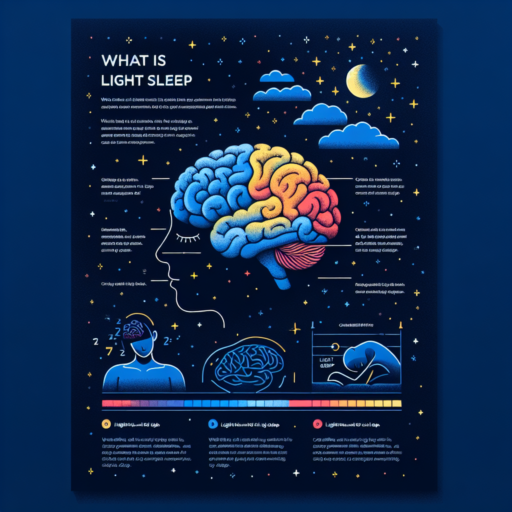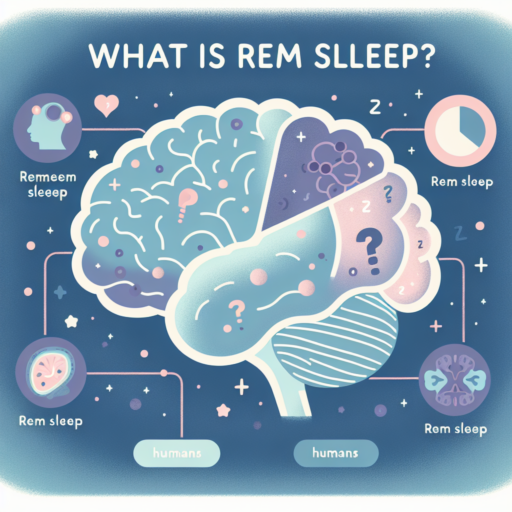What is a Half Marathon Race Predictor?
A Half Marathon Race Predictor is a specialized tool designed to estimate how long it takes an individual to run a half marathon. It typically uses recent race times over different distances to calculate your estimated half marathon time, employing specific algorithms or formulas to predict your performance. This tool is invaluable for runners of all levels who are training for a half marathon and want to set realistic goals based on their current fitness level.
Various factors contribute to the accuracy of a Half Marathon Race Predictor. These include the runner’s conditioning, the type of terrain, weather conditions on the day of the race, and even the runner’s nutrition and hydration strategy leading up to the race. Although these variables can affect the predicted time, the tool gives a good benchmark by analyzing key performance indicators from previous races, such as pace, distance, and overall race time.
How Do Half Marathon Race Predictors Work?
Half Marathon Race Predictors generally require you to enter the completion times of recent races you’ve run, specifically at distances like 5K, 10K, or even a full marathon. By inputting these times, the predictor can utilize various established formulas, such as the Riegel formula or the McMillan calculator, to estimate your half marathon time. These calculations take into account the physiological and exponential relationship between race distance and time, providing a tailored estimate that aligns with your unique capabilities.
How Does a Half Marathon Race Predictor Work?
Understanding the mechanics behind a Half Marathon Race Predictor is quite fascinating for both seasoned runners and newcomers. Essentially, these predictors use various algorithms to forecast your finishing time based on past performances. The premise is straightforward: by analyzing your speed, pace, and performance in previous races or runs, the predictor can offer an estimation of your completion time for a half marathon. This technology considers factors like race conditions and your fitness level improvements over time to provide a more accurate prediction.
At the core of the Half Marathon Race Predictor is a series of formulas and databases that compare your historical race times against a vast array of race outcomes from runners with similar profiles. It is not just about your fastest 5k or 10k time; these predictors evaluate the consistency of your performance, how you fare across different distances, and adjust the projection accordingly. By accounting for this breadth of data, they can mitigate the variability and unpredictability of race day performance.
The utility of a predictor rests on its ability to incorporate dynamic elements such as your progression over time. For instance, if you’ve shown a pattern of improvement, the predictor might factor in a degree of expected enhancement in your race time. However, it’s crucial for runners to input their most recent and representative times for assessments to be as accurate as possible. Additionally, many of these tools offer customization features, allowing runners to adjust for variables like training intensity, altitude, and even weather conditions expected on race day.
Top Rated Half Marathon Race Predictors Online
Finding the perfect half marathon race predictor can be a pivotal step for runners wanting to set realistic goals or define their training plans. With the rise of various online tools, identifying the top rated half marathon race predictors has become easier for athletes of all levels. These platforms leverage algorithms and past performance metrics to offer insights into expected race times, helping runners to gauge their potential with a remarkable degree of accuracy.
When exploring these online resources, it’s essential to consider the user interface and the depth of analysis provided. The best predictors not only estimate your finish time but also break down the race into manageable segments. This nuanced approach allows for targeted training sessions, helping runners to focus on specific areas of improvement. Moreover, some predictors go a step further, offering customized training plans based on the projected goal times, thus integrating seamlessly with a runner’s training regime.
It’s also worthwhile to explore the community and support aspect of these platforms. Many top-rated predictors feature forums or integration with social media, enabling users to connect with fellow runners. These communities can offer invaluable advice, motivation, and insights, transforming a solitary training journey into a shared experience.
Factors That Influence Your Half Marathon Time Prediction
When preparing for a half marathon, calculating your predicted finishing time helps set realistic training targets and race-day expectations. However, numerous factors can influence your half marathon time prediction, highlighting the complexity of distance running. Acknowledging these factors can help runners better prepare and adjust their goals accordingly.
Training Volume and Quality
The foundation of any successful half marathon performance lies in the runner’s training volume and quality. Higher weekly mileage combined with quality workouts, such as interval training and long runs, significantly contribute to endurance and speed improvements. However, it’s essential to increase mileage safely to avoid the risk of injuries, which could negatively impact your half marathon time prediction.
Previous Racing Experience and Personal Bests
Your past race performances, especially those at distances similar to or at the half marathon, offer valuable insights into your potential finishing time. Experience in handling race day conditions and pacing can greatly influence your outcome. Personal bests in races like 10Ks or marathons may also be used to estimate your half marathon time, applying performance prediction formulas that consider various distance results.
Running Economy and Environmental Factors
Another critical aspect is your running economy, which refers to how efficiently you use oxygen at a given pace. Factors like technique, strength, and flexibility all play roles. Additionally, environmental conditions on race day, such as weather, temperature, and course elevation, can significantly alter performance. For instance, running in hotter temperatures or on hilly courses requires more energy, potentially slowing your pace compared to running in ideal conditions.
Tips for Using a Half Marathon Race Predictor Effectively
Optimizing your use of a half marathon race predictor can be a game-changer in your training and racing strategy. These tools, designed to forecast your finish time based on current fitness and past performances, can be invaluable when used correctly. However, it’s important to understand the basics of how to leverage these predictors to your advantage, ensuring your goals are both ambitious and attainable.
Understand the Inputs
Accurately using a half marathon race predictor starts with understanding and correctly inputting your data. Most predictors require information such as your recent race times, average weekly mileage, and perhaps even your pacing on training runs. Accuracy is key; feeding the tool with precise and recent data ensures more reliable predictions. Remember, garbage in equals garbage out. Refining the inputs helps tailor the prediction to your actual fitness level and performance capabilities.
Setting Realistic Goals
Once you have a prediction, it’s vital to interpret the results wisely. Some runners might fall into the trap of setting goals that are overly ambitious, inspired by an optimistic race time prediction. Conversely, conservative runners might sell themselves short. A balance is essential. Utilize the prediction as a guideline to set realistic, achievable goals that push your limits without risking burnout or injury. Consider your training consistency, health, and any external factors that may impact your race day performance.
Incorporating feedback from a half marathon race predictor into your training plan can provide a focused framework for improvement. By understanding the tool’s inputs, refining your data, and setting sensible goals, you can harness the power of predictions to fuel a successful race strategy. It’s not just about the numbers; it’s how you use them to inform your training and mindset as race day approaches.
Training Plans Based on Your Half Marathon Race Prediction
Creating a tailored training plan for a half marathon starts with understanding your current fitness level and using that knowledge to predict your race time. This approach ensures that your plan is realistic, achievable, and designed to meet your specific goals.
Identifying Your Current Fitness Level
Before jumping into a training plan, assess your current running ability. This might include evaluating your regular running pace, the longest distance you’ve comfortably run, and your endurance level. Tools like time trials over shorter distances can provide valuable data to predict your half marathon race time accurately. This initial step is crucial for setting a training pace that will challenge you without leading to overexertion or injury.
Customizing Your Training Intensity
Once you have a race time prediction, you can tailor your training plan’s intensity. For beginners, this might mean focusing on gradually increasing distance while maintaining a manageable pace. More experienced runners might adjust their plan to include a mix of long runs, interval training, and tempo runs, all paced to align with their race prediction. Incorporating rest days and lower-intensity workouts is vital to allow for recovery and prevent burnout.
Adapting Your Plan Over Time
Your predicted race time doesn’t have to set your training in stone. It’s important to listen to your body and adjust your training schedule as needed. This might mean increasing the intensity if you’re finding the workouts too easy or scaling back if you’re struggling to keep up. Regularly reassessing your predicted race time can help keep your training on track and your goals within reach.
The Science Behind Half Marathon Race Prediction Algorithms
The quest to predict half marathon finish times has led to an intriguing intersection of athletics and analytics. Race prediction algorithms for half marathons leverage a combination of historical data, physiological metrics, and environmental conditions to forecast race outcomes. At the core of these algorithms lies a sophisticated understanding of human performance and endurance sports science.
Key Factors Influencing Prediction Accuracy
The accuracy of half marathon prediction algorithms hinges on several key factors. First, runners’ past performance data, including times from previous races and their progression over time, serve as foundational inputs. Equally important is the inclusion of physiological metrics, such as VO2 max (the maximum amount of oxygen an individual can utilize during intense exercise), lactate threshold, and running economy. Lastly, environmental variables like race day weather conditions and the course’s elevation profile significantly impact performance and, consequently, prediction accuracy.
Understanding the science behind these algorithms offers valuable insights not only for runners aiming to set personal bests but also for coaches tailoring training programs. By analyzing a vast array of data points, these algorithms can identify patterns and predict outcomes with remarkable precision, yet they continually evolve with new research findings in sports science and machine learning techniques.
Common Mistakes to Avoid When Predicting Your Half Marathon Time
When preparing for a half marathon, accurately predicting your finish time can help tailor your training and set realistic expectations. However, many runners fall into common pitfalls that skew their predicted time, leading to potential disappointment or injury. Understanding these mistakes can guide your preparation effectively, ensuring a more accurate and attainable goal.
Overestimating Past Performance
One frequent error is overestimating the impact of past performances on future races. Just because you ran a certain time in a 5K or 10K, doesn’t mean this directly translates to your half marathon time. Factors like increased distance, varying course conditions, and day-of health and weather can significantly alter outcomes. Instead, use these past races as guidelines, but remember to adjust expectations based on the specific demands of a half marathon.
Ignoring Training Consistency
Another critical mistake is ignoring the role of consistent training. It’s essential to look at your preparation leading up to the race honestly. Sporadic or interrupted training sessions can indicate an unrealistic predicted finish time. A true gauge of your potential half marathon time takes into account the frequency, intensity, and volume of your training. Without this, any time prediction may be overly ambitious.
Success Stories: How Accurate Predictions Improved Half Marathon Results
Exploring the transformative impact of accurate predictions on half marathon results offers a window into how runners of all levels can leverage analytics for enhanced performance. Whether through customized training plans, injury prevention strategies, or pacing adjustments, the integration of predictive analytics into running regimes has marked a pivotal shift in athletic preparation.
Customized Training Plans
Precise predictions have radically changed how runners approach their half marathon training. By analyzing past performances, current fitness levels, and future goals, algorithms provide tailored training schedules. Runners have witnessed significant improvements in their race times, attributing their success to the personalized training insights these predictions offer. This case-by-case approach ensures that each runner’s unique needs and capabilities are addressed, leading to more efficient and effective training periods.
Injury Prevention and Management
Another remarkable aspect is the role of accurate predictions in injury prevention and management. By forecasting potential overuse injuries or identifying areas of weakness, runners and their coaches can adjust workouts to avoid setbacks. This proactive approach has not only reduced the incidence of injuries but also contributed to faster recovery times for those who do encounter physical hurdles. The adoption of these predictive models has fostered a healthier, more resilient running community, poised to tackle the demands of a half marathon with confidence.
The discussion surrounding these success stories underscores the importance of embracing technological advancements in the realm of sports. As runners continue to benefit from the accuracy of predictive analytics, the future of half marathon preparation seems both bright and boundless. Their experiences serve as a testament to the power of data-driven strategies in unlocking potential and achieving remarkable results.
Future of Half Marathon Race Prediction: Trends and Innovations
The world of half marathon racing is undergoing significant transformations, fueled by the latest trends and innovations in technology and data analytics. As enthusiasts and athletes look to the future, the ability to accurately predict race outcomes and individual performances has become a focal point. This shift towards predictive analytics harnesses the power of vast data sets, from historical race times to the minutiae of individual runner’s biometrics, setting the stage for a new era in competitive racing.
Integration of Wearable Technology is a key trend revolutionizing half marathon predictions. Today’s devices not only track heart rate and distance but are also capable of analyzing running form, stride length, and even predicting recovery times. This wealth of personal health data contributes to more refined race predictions, offering insights into how small adjustments in training can lead to significant improvements on race day.
Another burgeoning trend is the Utilization of Artificial Intelligence (AI) and Machine Learning (ML). AI algorithms can sift through extensive datasets to identify patterns and predict outcomes with astonishing accuracy. From weather conditions on the day of the race to comparing individual progress against thousands of other runners, AI and ML are setting new standards in personalized race prediction and strategy formulation.










